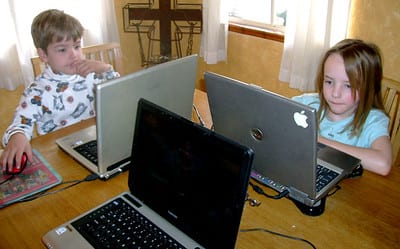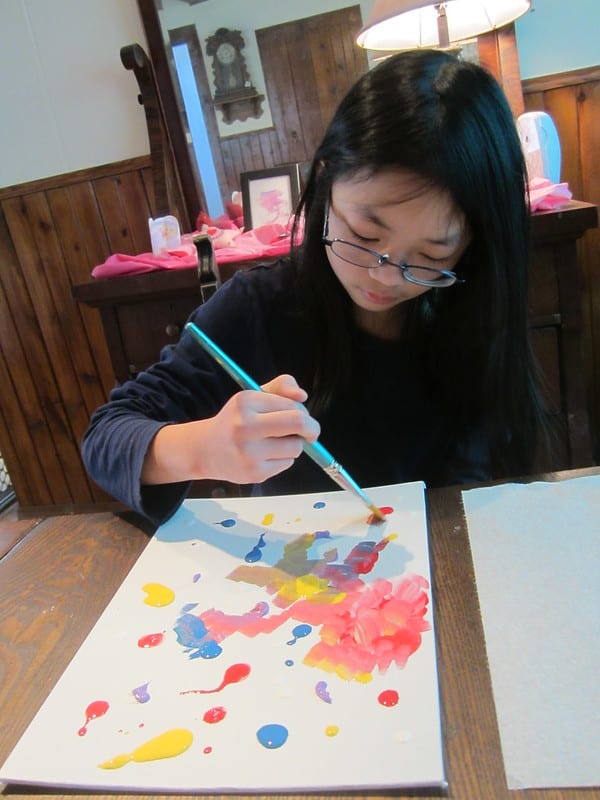
Since January we have been hearing of a highly contagious new virus in Wuhan province in China. First the Chinese authorities suppressed the doctor and bloggers who reported on it. Then they took complete action to shut down the province to “flatten the curve” or reduce the spread of the virus through social contact.
At the time, those who were listening/watching/reading were either amazed by this display of the Chinese totalitarian state or remarked that no other country would be able to deal with the crisis in the same extreme way.
Three months later, we have all become, it seems, Chinese. From the closing of schools to movie theaters and all gatherings of people 100+, the countries and governments of the world are scrambling to #flattenthecurve. The lack of coordination between governments and the cutting of funding to medical programs are subject for another blog (but definitely worth mentioning).
For this blog, I will stick to what I know best as an educator and parent: school. Because schools are the first line of defense for public interaction and closing them is the first sign that a community is taking active measures to stem a viral outbreak.
Now and Then
It goes without saying, but perhaps in order to appreciate the scale of disruption to everyday life at the moment, we need some contrast. In 1918, for example, during the last massive global outbreak, no one could say: let’s get kids to go to school online! Or during World War II. Or perhaps even in 2000 when I graduated from college. The technology for conferencing, uploading, recording, sharing, wasn’t there. Most students were using computers in a lab on campus and getting their first email addresses that they checked infrequently.
We know what’s happened since then, so a timeline of technological infrastructure is also not the point of this blog (but very interesting if you want to go read up on it here).
But it is worth mentioning that since 1918 school has not come very far from a model of public good to prepare future factory workers. Yet in our contemporary society school has become much more: now it’s a place children receive meals (something homeless American school children are now at high risk for in particular during any closure), support services for a wide range of issues, and in the best instances, can rise above familial circumstances to fulfill their obligations. (There are contrary views to the theory of a factory based view of education as well.)
The business models of schools haven’t changed however and that is something else to watch during this pandemic: we are already grappling with organizations that don’t have business continuity plans. And schools/universities are at the center of this vortex to try to teach effectively online.
While the technology may be available, that’s one piece of a very complicated puzzle as teachers, parents, and students around the world at all levels of education are learning (or will discover very soon). For virtual school to work, there are many things that need to be in place – prior to a school system shutting down.
Teacher Training
This covers everything from schools choosing specific platforms for teachers to use when sharing lessons, to teachers themselves understanding how to use various software packages as well as choosing which ones might best serve their subjects and students.
Teaching English, for example, is fairly easy to do online: I can record myself reading text to my students, or post links to the assignment and receive text back.
But Physical Education? Yes, a video of your teacher doing situps is one thing, but who is keeping you accountable to see whether you have done them?
Music? Foreign Languages? Yes there are workarounds and thankfully the school I’m apart of was operating in China, then had to close 9 schools there for several months, and therefore this was foremost on their mind. Our discussions about online learning began in February (as did the school where my children attend) so when the announcement came, last Monday, everyone went to their teaching stations and hit record. Not so throughout the school system, unfortunately.
Teachers will still have to mark work and with larger classes, this will be as challenging (if not more so) for large classes when individualized feedback is now in terms of recorded video, audio, or online entries.
Student Readiness

Ideally if you have time, students get to practice on the platforms as well. Logging in, accessing materials, posting their entries: all of this may sound mundane but these pedantic details are the difference between a smooth transition online and people throwing up their hands in frustration, plus having to extend the school year into the summer.
We can’t assume all students have access to reliable Internet or their own device on which to access their lessons. This opens an entire new box of questions as to what the school’s responsibility is – those with considerable resources can loan devices to certain age groups/cases.
Parental Preparedness
The shadowy, often unmentioned figure in education: parents, also need to be prepared for what/how virtual schooling happens. Particularly with those who have younger children in early years of elementary school, online learning will be entirely new territory. Parents have a wide range of expectations about their role versus the school’s as well as cultural expectations around learning. This is another weighty tangle that emerges once you hit the “online learning” button.
Many households worldwide have two working parents and virtual school definitely poses challenges in terms of supervision and management, not to mention instructional knowledge. This is particularly so if the lessons are live learning so that the teaching day adheres to the same schedule as a face to face learning day.
Another major issue is that the learning needs of students who need additional support can exceed their parents’ ability to support them. These can range from a ‘slow’ learner to children with complex diagnoses such as having ADHD or processing issues. The standard virtual classroom is not a one size fits all solution in this case.
So yes, there’s a lot to think about. And to those in paid school systems, like many expat communities around the world, questions swirl about what families are paying for in an online learning environment.
You’re still paying for the same thing face to face: tailored instruction that is delivered to students in a thoughtful and prepared manner. Just because the material is virtual doesn’t mean the person making it is. In fact, I hope we are confronted by the opposite: that the complicated, rewarding work of teaching and learning are on display.
Homeschooling is now … Homeschooling + Challenges
Homeschooling parents in your neighborhood may have become suddenly very popular as the possibility of virtual school comes to your community. They can gleefully smile at panicked parents who aren’t sure how to fill the day with their children. They will respond with “that’s my normal life” each time someone wonders how they will get to their children to learn. And they aren’t wrong. Though we may feel as though they chose homeschooling (and we wouldn’t be wrong) the additional restrictions on outdoor play spaces or socializing means that the outlets for homeschoolers (and their students) are now much more limited.
They too will be facing challenges when virtual school finds them. I say when because already children’s learning has been disrupted in China, South Korea, Italy, India, Spain, Qatar, and Ireland. And those are just from Covid19.
What’s it like where you are?
Let us know what teachers, students or parents are doing in your part of the world. And any advice you have for any of these groups :).
Let’s also keep perspective knowing that children in Syria, Yemen, Myanmar, Palestine, Sudan, Sierra Leone, and Sri Lanka have also had their education disrupted and for periods far longer with far reaching consequences for their societies.
